Are you dealing with a clogged washing machine drain and wondering if a drain unblocker can help?
In this article, we will explore what a drain unblocker is, how it works, and whether it can be used in a washing machine.
We will also discuss the risks of using a drain unblocker in a washing machine and provide alternative methods for unclogging the drain.
Discover the causes of clogged washing machine drains, prevention tips, and steps to take if your drain is already clogged. Let's dive in!
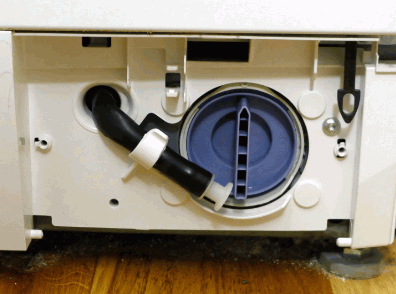
What Is Drain Unblocker?
A drain unblocker is a chemical or mechanical solution used to clear blockages in pipes and drains. It is designed to dissolve or break down substances that cause clogs, allowing water to flow freely through the drain.
There are different types of drain unblockers available in the market to cater to various types of blockages.
Chemical drain unblockers work by reacting with the clogged material to break it down into smaller pieces, making it easier to flush away.
On the other hand, mechanical drain unblockers use tools like drain snakes or plungers to physically dislodge the blockage. Both types have their advantages depending on the nature of the blockage and the type of drain being cleared.
Explore: How To Unblock Drain In Shower
How Does Drain Unblocker Work?
Drain unblockers work by either chemically dissolving or mechanically breaking down the blockages present in drains and pipes. Chemical drain unblockers contain ingredients that react with the clog, causing it to disintegrate and clear the pathway for water flow.
On the other hand, mechanical drain unblockers operate by using physical force to dislodge and remove the obstruction. These tools, such as drain snakes or plungers, work by either pushing or pulling the blockage out of the drain. The choice between a chemical or mechanical option depends on the nature of the blockage. For instance, for organic matter or hair buildup, a chemical solution that can dissolve these materials might be more effective. In contrast, for a solid object causing the blockage, a mechanical method would be better suited to dislodge it and clear the drain.
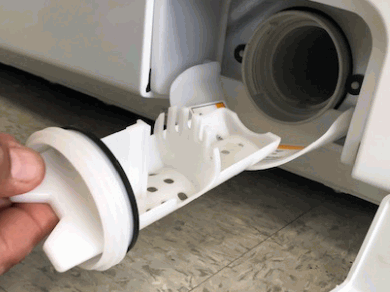
Can Drain Unblocker Be Used In A Washing Machine?
Yes, drain unblockers can be used in a washing machine to clear blockages in the machine's drain system. When a washing machine drain is clogged, using a drain unblocker specifically designed for washing machines can help resolve the issue and prevent lasting damage to the machine.
It is crucial to choose a drain unblocker that is safe for washing machines, as using the wrong product can lead to corrosion or other harmful effects on the internal components of the appliance. Before applying the drain unblocker, it is recommended to remove any excess water or debris from the machine's drain area to optimize the effectiveness of the product.
Once the area is prepared, carefully follow the instructions provided by the manufacturer of the drain unblocker. Typically, this involves pouring the recommended amount of the solution directly into the drain and allowing it to work its magic for a specified period.
What Are The Risks Of Using Drain Unblockers In A Washing Machine?
While using a drain unblocker in a washing machine can help clear blockages, there are risks involved. Incorrect application or using a drain unblocker not suitable for washing machines can potentially cause lasting damage to the appliance.
One of the main risks of using the wrong type of drain unblocker in a washing machine is the possibility of chemical reactions that can corrode or damage sensitive components. Choosing a drain unblocker specifically designed for washing machine drains can help avoid this issue. Using harsh chemicals not meant for washing machines may lead to leaks or blockages in other parts of the appliance, further exacerbating the initial problem. It is crucial to read and follow the manufacturer's instructions to prevent irreversible harm and maintain the longevity of your washing machine.
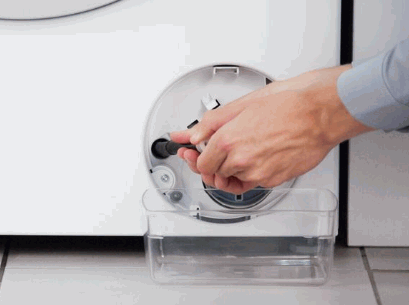
What Are The Alternatives To Drain Unblocker?
Apart from using drain unblockers, there are alternative methods to clear blockages in drains. These methods include using a plunger, drain snake, or natural solutions like baking soda and vinegar.
For instance, a plunger can be highly effective in dislodging minor clogs by creating a vacuum and pressure to forcefully free the trapped debris. Similarly, drain snakes are useful for reaching deeper blockages, such as hair or grease accumulations, by physically pulling out the material causing the obstruction.
In terms of more eco-friendly approaches, a simple concoction of baking soda and vinegar can work wonders. Start by pouring a pot of boiling water down the drain followed by half a cup of baking soda. After letting it sit for a few minutes, pour a mixture of one cup of vinegar and one cup of hot water. The chemical reaction can help dissolve and clear the blockage naturally.
Using A Plunger
Using a plunger is a common and effective method to clear minor drain blockages. By creating a seal around the drain opening and applying pressure through plunging, you can dislodge clogs and restore proper drainage.
Begin by ensuring the plunger cup is fully covering the drain opening, forming a tight seal to maximize suction. Next, push the plunger down firmly, then pull it up quickly to create a strong force that can break up debris blocking the pipe.
It's important to maintain a rhythmic plunging motion, alternating between steady pushes and swift pulls. Avoid using excessive force, as this could damage the pipes.
If your efforts with the plunger prove unsuccessful or if you notice recurring clogs, it might be time to consult a professional plumber to address any underlying issues.

Using A Drain Snake
A drain snake, also known as a plumber's snake, is a flexible auger used to remove blockages from drains. By inserting the snake into the drain and rotating it, you can break up and pull out obstructions causing the clog.
When using a drain snake, it's crucial to feed it slowly into the drain to prevent any potential damage to the pipes. As you rotate the snake, it latches onto debris and allows you to pull it back out. The claw-like design at the end of the snake helps in grabbing onto stubborn clogs. Remember, most blockages are caused by a mixture of hair, grease, soap scum, and other debris that accumulate over time.
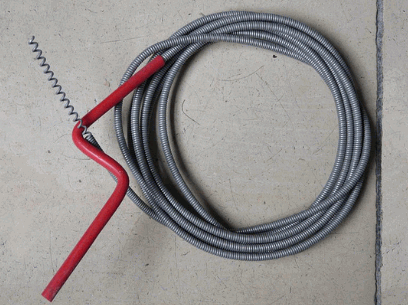
Using Baking Soda And Vinegar
A mixture of baking soda and vinegar can act as a natural drain cleaner to dissolve minor blockages. When combined, these two ingredients create a foaming reaction that helps break down organic matter and bacteria in the drain.
To prepare this DIY solution, start by pouring one cup of baking soda down the clogged drain. Follow it up with one cup of vinegar. The mixture will start fizzing and bubbling as it works its way through the pipes, loosening debris and buildup. Let it sit for about 30 minutes to maximize its cleaning effect.
After the waiting time, flush the drain with hot water to wash away the loosened gunk. Not only does this method clear clogs effectively, but it also helps eliminate foul odors caused by stagnant water and bacterial growth in the pipes.
Remember to take safety precautions when handling these ingredients. Avoid direct contact with the eyes and skin, and ensure proper ventilation while using them.
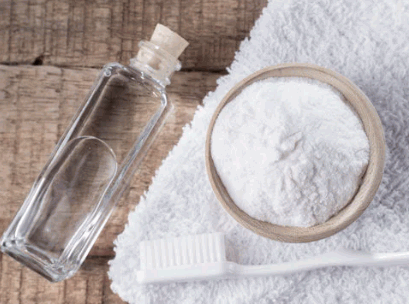
What Are The Causes Of A Clogged Washing Machine Drain?
There are several factors that contribute to a clogged washing machine drain. Common causes include the buildup of lint and debris, foreign objects accidentally entering the drain, and the accumulation of hard water deposits over time.
Lint is one of the most prevalent culprits when it comes to drain blockages in washing machines. The tiny fibers shed from clothes during the wash cycle tend to accumulate in the drain pipes, forming a thick mass that hinders water flow. Foreign objects like coins, buttons, or even small toys can find their way into the drain, leading to potential blockages. Mineral deposits from hard water can solidify over time, narrowing the passages within the drain system and reducing the efficiency of the washing machine.
Buildup Of Lint And Debris
The accumulation of lint and debris from clothes during washing cycles is a primary cause of clogged washing machine drains. When these particles gather in the drain, they form blockages that impede water flow and drainage.
While washing your clothes, fibers from various fabrics tend to break loose and mix with other residues, creating lint that finds its way into the drain system. Over time, this lint buildup can lead to significant clogs, affecting the proper functioning of your washing machine.
To prevent excessive lint from causing drain blockages, it's advisable to use a lint trap or filter in your washing machine. These devices are designed to capture lint and prevent it from clogging up the drainage system. Regularly checking and cleaning out the lint trap helps maintain optimal performance.
Regular maintenance of your washing machine is crucial to avoid clogs and ensure efficient operation. By cleaning the drain pump filter and running cleaning cycles with vinegar or specific washer cleaning products, you can prevent lint and debris from accumulating and causing drainage issues.
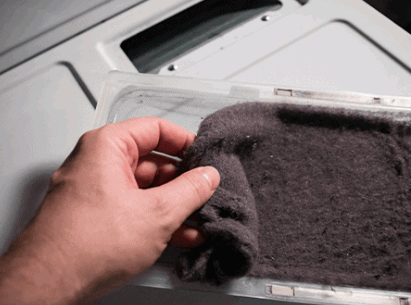
Foreign Objects
Objects like small toys, jewelry, or pet hair can accidentally find their way into the washing machine drain, leading to clogs. Children and pets are often the culprits behind introducing foreign objects that cause blockages.
The curiosity of children and the playful nature of pets can result in them dropping items like coins, pieces of clothing, or even small electronics into the washing machine, unknowingly causing potential drain issues. To prevent such mishaps, it's advisable to keep a watchful eye on your little ones and pets while they are around the laundry area. Consider placing a mesh laundry bag for delicates to catch any small items that might accidentally fall out during the wash cycle, reducing the risk of them entering the drain.
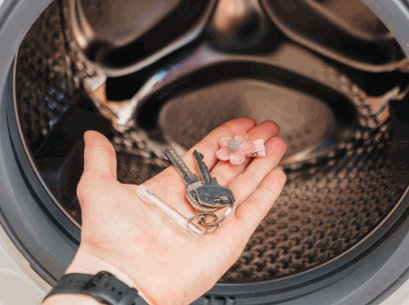
Hard Water Deposits
Hard water contains high levels of minerals like calcium and magnesium that can accumulate in washing machine drains over time. These mineral deposits harden and form scale, restricting water flow and causing clogs.
The impact of these mineral deposits on washing machine drains can lead to various issues, such as slow drainage and foul odors emanating from the machine. Scale formation on drain pipes may not only impede water flow but also reduce the efficiency of the washing machine's drainage system.
To prevent such complications, regular maintenance of washing machine drains is crucial. It is recommended to use vinegar-based solutions or commercial descaling agents to remove mineral buildup and keep drains clear. Installing a water softening system for the whole house can help combat hard water issues, ensuring efficient operation of washing machines and prolonging their lifespan.
How To Prevent Clogged Washing Machine Drains?
Preventing clogged washing machine drains involves regular maintenance and simple measures to keep the drainpipe clear.
One effective way to maintain a clear washing machine drain is by periodically cleaning the drainpipe using a mixture of vinegar and baking soda. This natural solution helps break down any built-up residue, preventing potential clogs. Using mesh laundry bags to contain small items like socks or undergarments during laundry cycles can prevent them from entering the drain and causing blockages. Installing a water softener can also help reduce mineral buildup in the pipes, minimizing the risk of drain obstructions. Taking these proactive measures is essential to ensure your washing machine operates efficiently and avoids drainage issues.
Regularly Clean The Lint Trap
Regularly cleaning the lint trap of the washing machine after each laundry cycle can help prevent lint buildup in the drain. Running a hot water cycle occasionally can also flush out accumulated debris and maintain a clear drainpipe.
One major reason why cleaning the lint trap is crucial is that lint, over time, can clog the drain and lead to water not draining properly during the wash cycle. A blocked drain can cause water to back up and potentially overflow, creating a mess.
To effectively clean the lint trap, start by locating the lint filter typically found near the top rim of the washer. Remove the filter and peel off any lint or debris accumulated on it.
Consider using a vacuum attachment or soft brush to eliminate any remaining lint stuck in the trap. After cleaning the lint trap, ensure to reinsert it securely back into its place before running the next load of laundry.
To enhance the cleaning process, it's recommended to periodically run hot water cycles without any laundry to clear out dirt or residue that might have built up along the drainpipe walls. This simple maintenance step can go a long way in preventing potential blockages and maintaining the efficiency of your washing machine.
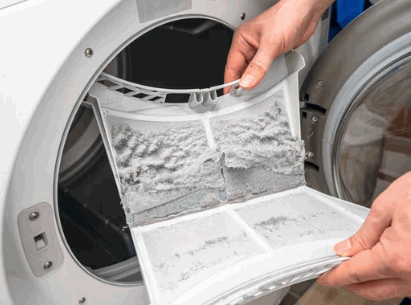
Use A Mesh Laundry Bag For Small Items
Utilizing a mesh laundry bag for small items like socks, underwear, or delicate garments can prevent them from entering the washing machine drain. The bag acts as a barrier, capturing tiny articles and minimizing the risk of clogs.
Using mesh laundry bags protects delicate fabrics from tangling or getting damaged during the washing cycle. These bags are usually designed with a fine weave that allows water and detergent to flow through while keeping the items contained. This not only helps in preserving the quality of the garments but also ensures that small pieces, such as bra hooks or buttons, do not snag or entangle with other clothing. Investing in several mesh laundry bags of different sizes can make sorting and washing various items a breeze.
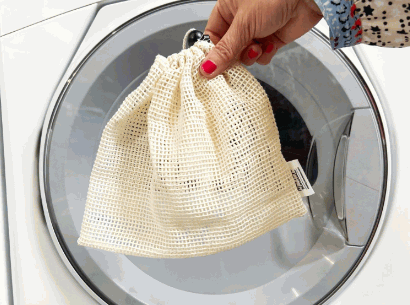
Install A Water Softener
Installing a water softener can reduce the formation of hard water deposits in washing machine drains. By treating the water supply before it enters the machine, you can minimize mineral buildup and extend the lifespan of your sewer system.
Water softeners play a crucial role in preventing limescale buildup, which can lead to costly issues like drain clogs and decreased appliance efficiency. The benefits of using water-softening systems extend beyond just the washing machine; they also help protect your sewer lines from blockages caused by mineral deposits. Choosing the right water softener involves considering factors like your water hardness level and household size.
Proper installation of a water softener is essential for its effectiveness. Ensuring it is installed at the entry point of your water supply will allow it to treat all water entering your home, including that which goes to your washing machine and drains.
What To Do If The Washing Machine Drain Is Already Clogged?
When faced with a clogged washing machine drain, there are immediate steps you can take to address the issue. Trying manual removal, using a natural drain cleaner, or seeking assistance from a professional plumber are viable options to restore proper drainage.
One effective method for tackling a clogged washing machine drain is manual removal. Begin by unplugging the machine and locating the drain either behind or beneath your unit. Use a plumber's snake or a wire coat hanger to carefully dislodge any debris causing the blockage. Remember to work slowly and gently to avoid damaging the drain pipes.
Another eco-friendly solution involves using a combination of baking soda and vinegar as a natural drain cleaner. Pour a cup of baking soda down the drain followed by a mixture of one cup of vinegar and one cup of hot water. Allow the foam to work its magic for about 30 minutes before rinsing with hot water.
If after attempting these methods, the clog persists or if you notice any severe issues such as unusual noises, foul odors, or leaks, it's time to call in a professional plumber. They have the expertise and tools to diagnose and tackle more complex blockages, ensuring your washing machine operates smoothly once again.
Try Manual Removal
Manual removal of clogs from a washing machine drain involves physically dislodging or extracting the blockage using tools or implements. By identifying the source of the smell or blockage, you can manually address the issue and restore proper drainage.
Inspection is key in this process; start by examining the drain for visible clogs or debris. Common culprits include lint, small clothing items, or mineral buildup. Once located, use a plumbing snake or a
- plunger to dislodge softer blockages,
- while a plumber's auger may be needed for tougher obstructions.
To prevent future clogs, consider adding a lint trap to catch debris before it reaches the drain. Good maintenance habits can significantly extend the life of your washing machine.
Use A Natural Drain Cleaner
Natural drain cleaners like a mixture of vinegar and baking soda can help dissolve organic matter and bacteria causing clogs in washing machine drains. The foaming action generated by this solution can break down blockages and eliminate unpleasant odors.
Preparing this eco-friendly cleaning solution is simple. Begin by pouring one cup of baking soda down the drain, followed by two cups of white vinegar. Allow the mixture to foam and work its magic for about 30 minutes, letting it penetrate and break up the blockages.
This natural combination not only effectively clears clogs but also helps to deodorize the drain, leaving a fresh and clean scent. Compared to harsh chemical cleaners, the use of vinegar and baking soda is gentle on pipes and the environment, making it a sustainable choice for maintaining optimal sewer hygiene.
Call A Professional Plumber
If attempts to clear a clogged washing machine drain are unsuccessful, it is advisable to seek help from a professional plumber. Experienced plumbers like Richard Trethewey have the expertise and tools to diagnose and resolve complex drain blockages efficiently.
When facing persistent washing machine drain clogs, it can be incredibly frustrating and time-consuming to deal with on your own. Professional plumbers not only have the necessary skills but can also provide expert guidance to prevent future issues.
By entrusting your drain concerns to knowledgeable professionals, you can save time, money, and the hassle of DIY attempts gone wrong.
